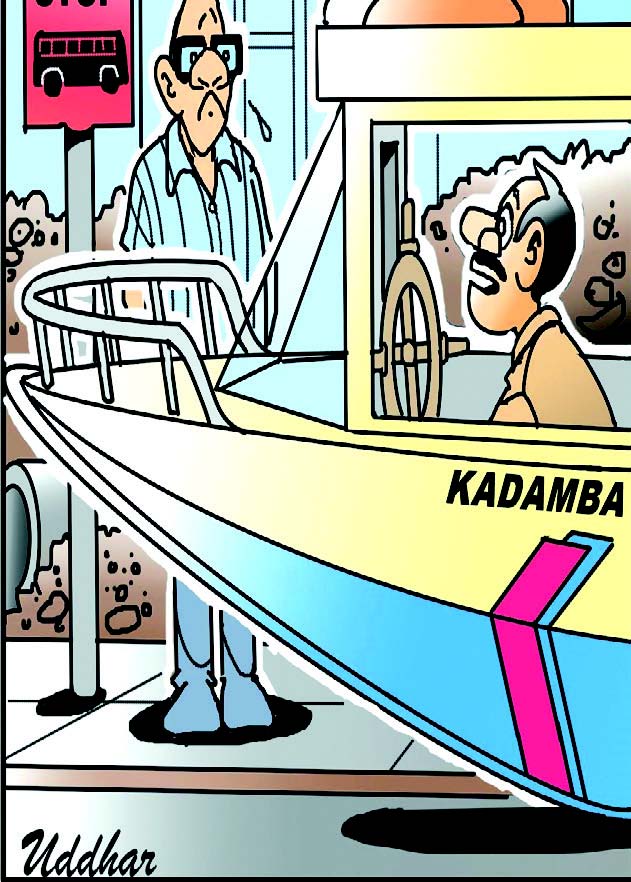14 Sep 2018 | 04:24am IST
A requiem for demonetisation
The bubble has finally burst; or should I say the cat is finally out of the bag. The RBI in its annual report of 2017-18 informs us that 99.3% of the currency in circulation has returned to the banks. The balance 0.7% is easily explained as the amount probably held in countries like Bhutan where the rupee is legal tender and whose citizens have requested banks to permit exchange officially. Other smaller amounts have remained in private hands for various reasons. In any event these numbers are nowhere near the amount of black money projected to be forced back into circulation and culprits brought to book. As anticipated by Raghuram Rajan, two issues put paid to such predictions. Firstly the era of black money being stashed in mattresses or freezers is long gone. It is now held in assets like real estate and gold. And secondly even if some of it is held in cash, the ingenious average Indian would find ways to circumvent the issue.
It is believed that large sums made their way into the system through mules with the connivance of bankers. Some of it may well have legitimate explanations. This partly explains the long queues at banks which killed over a hundred people. In short the exercise conducted with the purpose of apprehending people with undisclosed wealth was a colossal flop bringing only additional hardship to an already beleaguered people. Experts allege that it provided an opportunity to convert black money into white through multiple over the counter exchanges.
When the idea was first floated to the then RBI governor, he gave it a thumbs down for the reasons given above. The exercise was introduced surreptitiously by asking the RBI governor on Nov 7, 2016, to send its recommendation the next day. The RBI board dutifully obliged on Nov. 8 without any analysis of the issue. The cabinet was “told” at a meeting on the Nov. 8 leaving even the Chief Economic Advisor unaware. Presumably “secrecy” was “essential”.
The second stated objective was to check-mate the counterfeit currency market. The forgers merely destroyed the old notes and printed new ones, indicated by subsequent seizures of counterfeit new currency notes. So that objective went down the drain. As for ending terror financing, one patiently waits for any evidence of this as terror continues unabated.
The finance minister claimed that the move brought a “formalisation” of the economy. India being a cash-based economy the exercise shook the confidence of the ordinary man in the system. As a result cash in hand as assessed per household doubled from 1.4% to 2.8% post demonetisation. He claimed that tax returns filed jumped to a record of 5.42 crores ignoring the fact that a considerable number of these were returns with incomes below taxable limits and merely a clerical and logistical exercise. The average tax collected per return has actually fallen. Suspicious accounts have been passed on for scrutiny but it remains to be seen how much is black money after being contested, appealed and re-appealed.
The GDP actually fell and recovered later mainly due to increased government spending. Furthermore the claimed shift from the informal sector to the formal sector is not reflected in an increase in the indirect tax collection. GDP measures the formal sector and assumes a similar growth in the informal sector.
Every failed idea has to have a fall guy, and NITI Aayogs vice-chairman Rajiv Kumar attempted to make Raghuram Rajan the scapegoat by blaming his “restrictive” banking policies for the fall in GDP rather than the demonitisation exercise. Economic experts have dismissed this as “more than a little silly”. The restrictive policies he refers to were the tightening up of NPAs and disallowing banks to fudge their loan books. It is largely as a result of this squeeze that the PNB and other scams tumbled out of the closet and indeed continue to do so. Kumar’s irrational comments suggest that Rajan should not have forced banks to clean up their books and reveal their bad loans! The government in its infinite wisdom has now placed one of the brains behind the demonitisation idea on the board of the central bank. Heaven save us from such crazies.
One justification for the exercise was that it put India on course to becoming a cashless economy. Sweden one of the most efficient cashless economies in the world achieved this without inflicting any pain on its citizens like our ill-conceived exercise did. Statistics indicate that the pace of digitization showed a brief uptick immediately after November 2016 but soon returned to its own steady pace maintained between 2013-14 and 2017-18. Demonitisation had no impact. The only sector impacted positively was the Universal Payment Interface (UPI) and some would even debate whether this merely reflected an increased use of advanced technology or a benefit of demonitisation.
The Raghurams and the Arvinds of the RBI and economic advisory committees have long gone, some rather abruptly. We will never know why. But surely the parliamentary committee set up to examine the issue has no reason to stonewall the release of its report. The draft circulated by the chairman Veerappa Moily has been stalled by dissenting notes from the ten BJP members and six from allied parties who form a majority in a committee of thirty-one. The report is obviously critical of the government and therefore labelled as politically motivated by these members. They insist that the report criticises “the mother of all reforms” and obstruct its tabling. It will only see the light of day if Moily as chairman, has the political courage to put the report in public domain with the dissenting notes or whether the government has the moral integrity to table the report and tell us what went wrong.
Meanwhile we anxiously wait for the next fiasco to be revealed.
(The writer is a founder member of the Voluntary Health Association of Goa)
